Announcements
WebWork schedule:
- Polynomials-Divide Polynomials – due Thurs Feb 29 (Sec 1.2.5)
- Rational Expressions-Simplifying – due Fri March 1 (Sec 1.3.2)
- RationalExpressions-Multiplying and Dividing – due Mon March 4 (also Sec 1.3.2)
- Rational Expressions-Adding and Subtracting Part 1 – due Mon March 4 (Sec 1.3.3)
We will have our first midterm exam next Wed (March 6). On Monday I will discuss the topics that will be covered on the exam, and provide a list of review exercises. In the meantime, please work on the WebWork sets listed above, since the best preparation for the exam is to do the homework exercises.
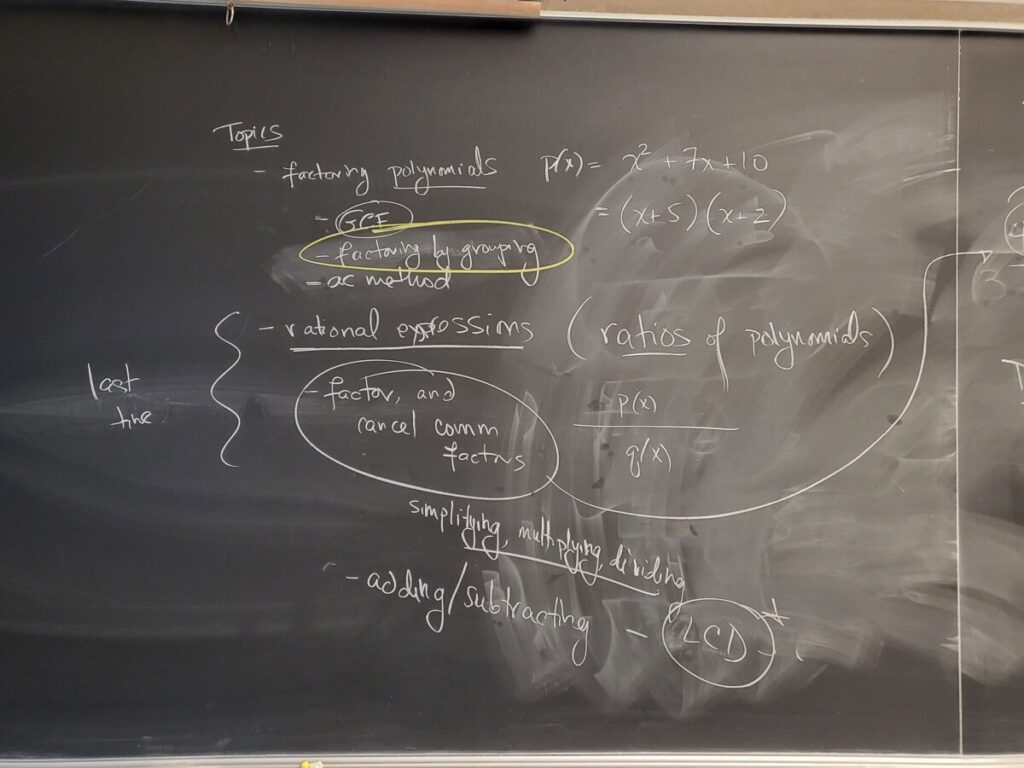
Topics
We went through some more examples of multiplying/dividing and simplifying rational expressions–again, the strategy is to factor the polynomials in the numerator and denominator and then cancel common factors:
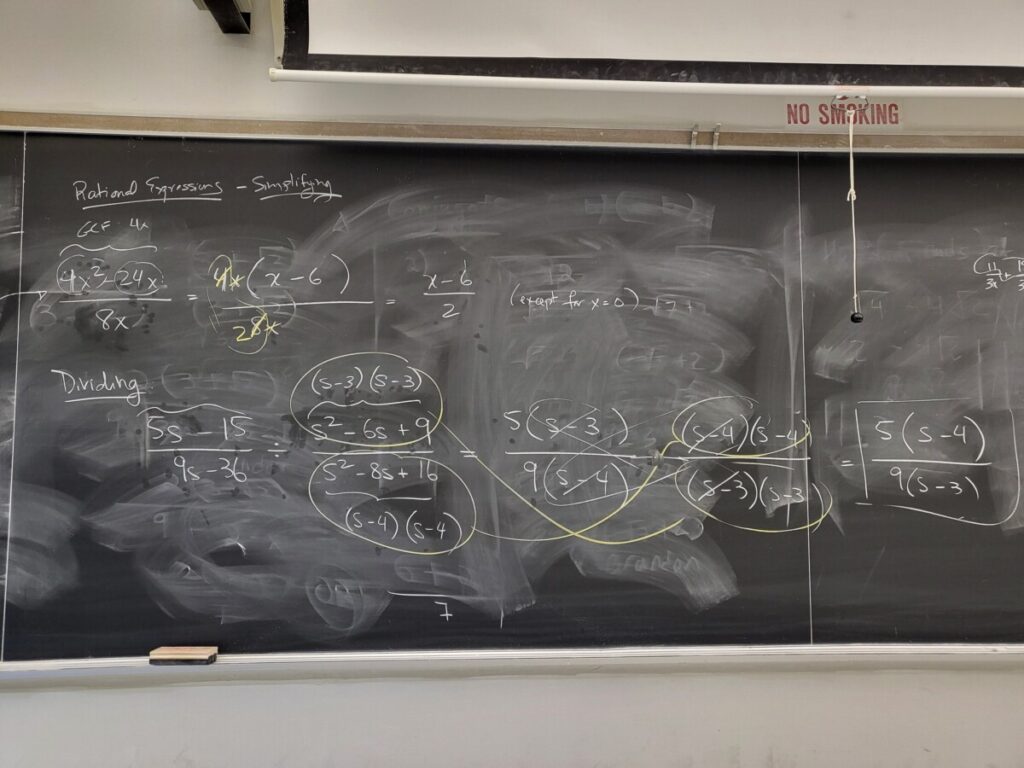
We went through the last exercise of the “RationalExpressions-Multiplying and Dividing” WebWork, which involved factoring “difference of two squares”:
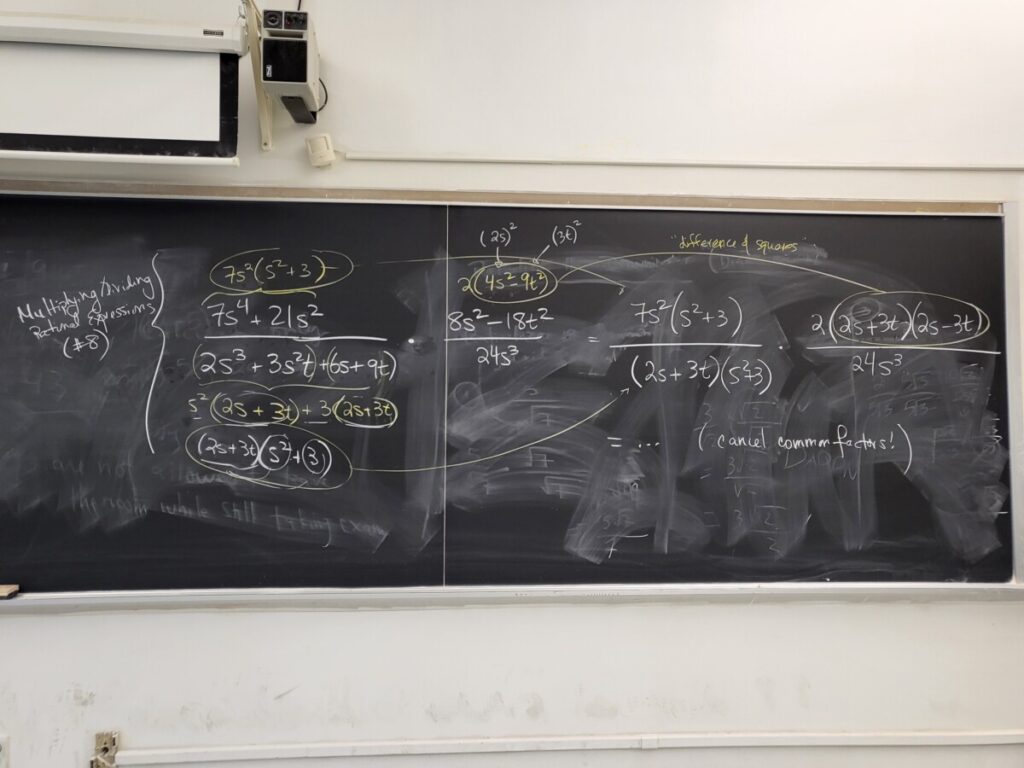
We then moved on to adding and subtracting rational expressions. We started with exercises in “Rational Expressions-Adding and Subtracting Part 1” where the given rational expressions already have the same denominator, in which case we can just add/subtract the numerators (i.e., “across the top”). But in these exercises, we still need to simplify by factoring and cancelling common factors:

Next time, we will look at adding/subtracting rational expressions which don’t have the same denominator, in which case we will need to find the least common denominator (LCD), and transform the given rational expressions so they each have the LCD.
The exam will include the material we will cover in class on Monday!
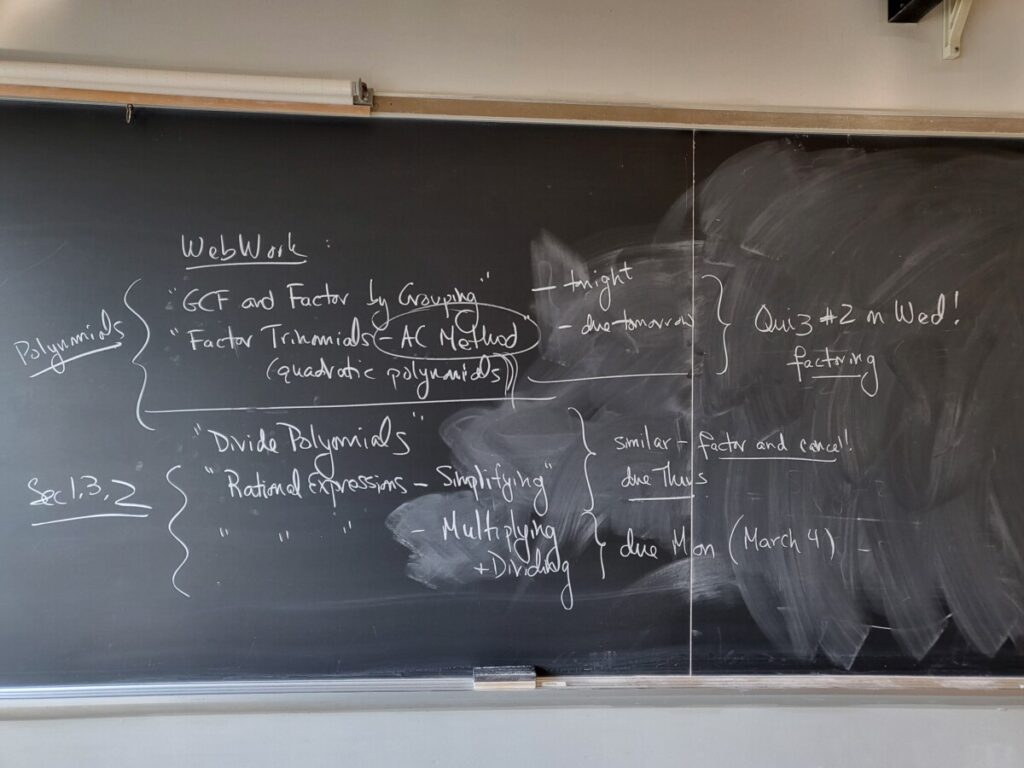
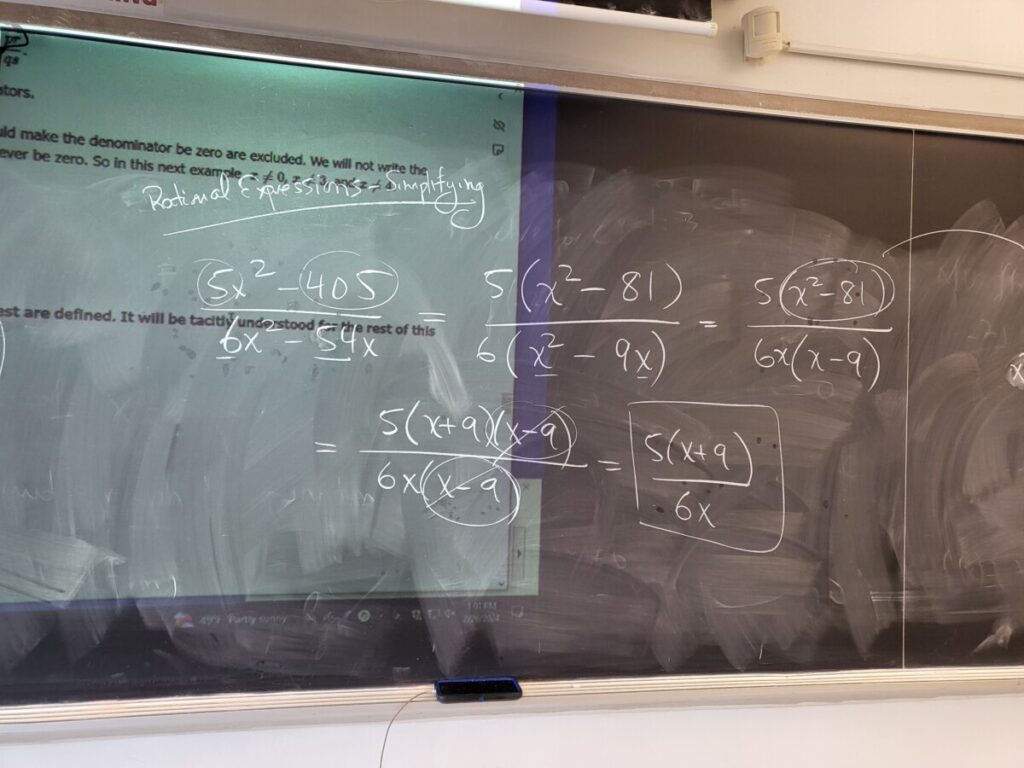
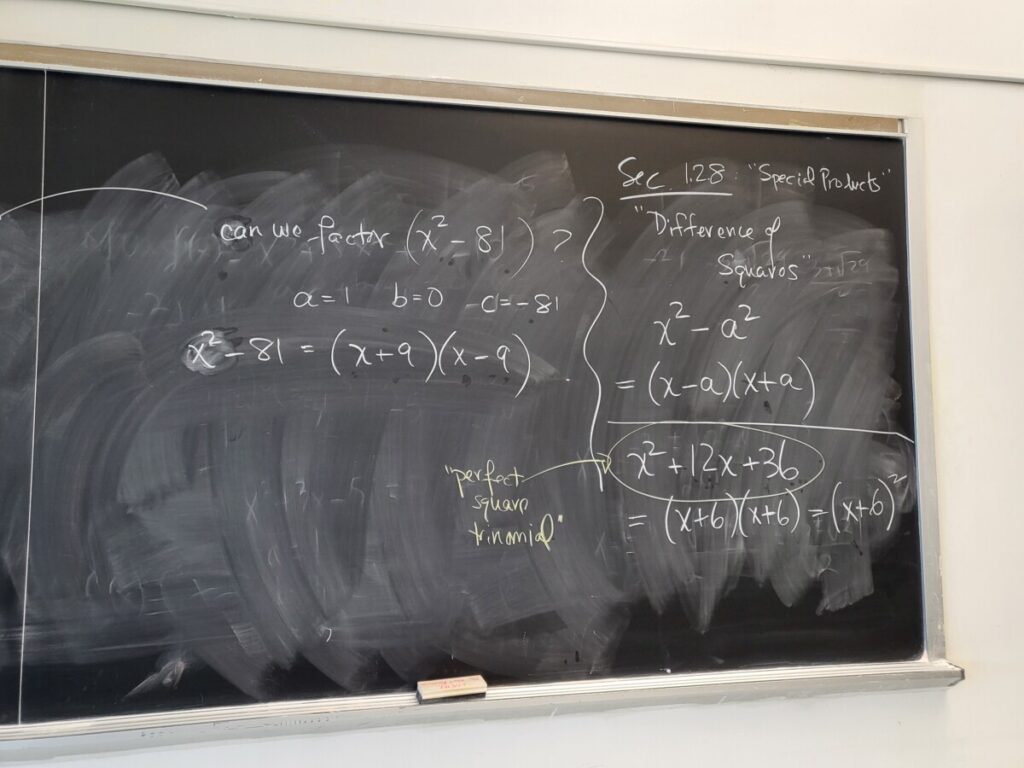
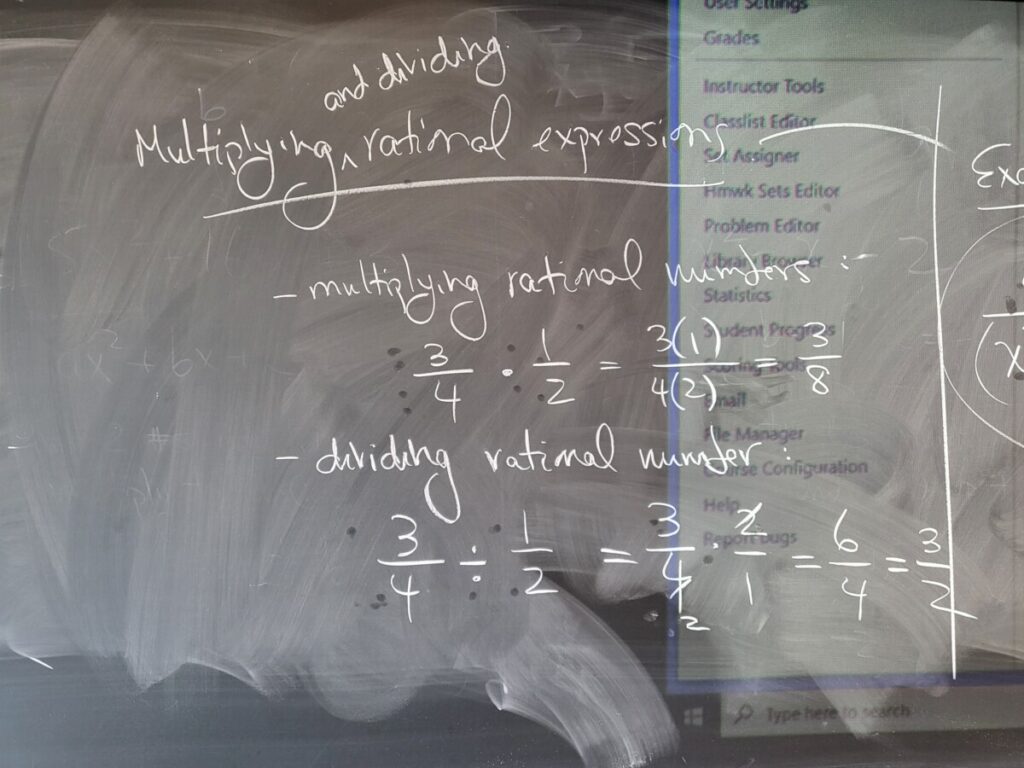
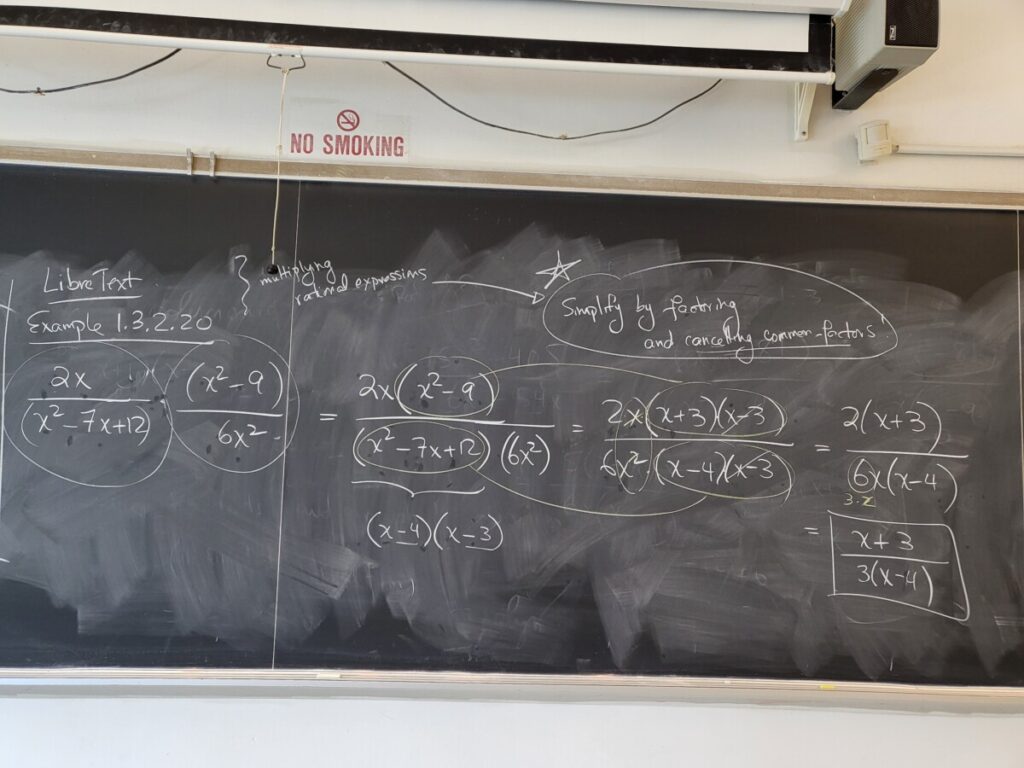

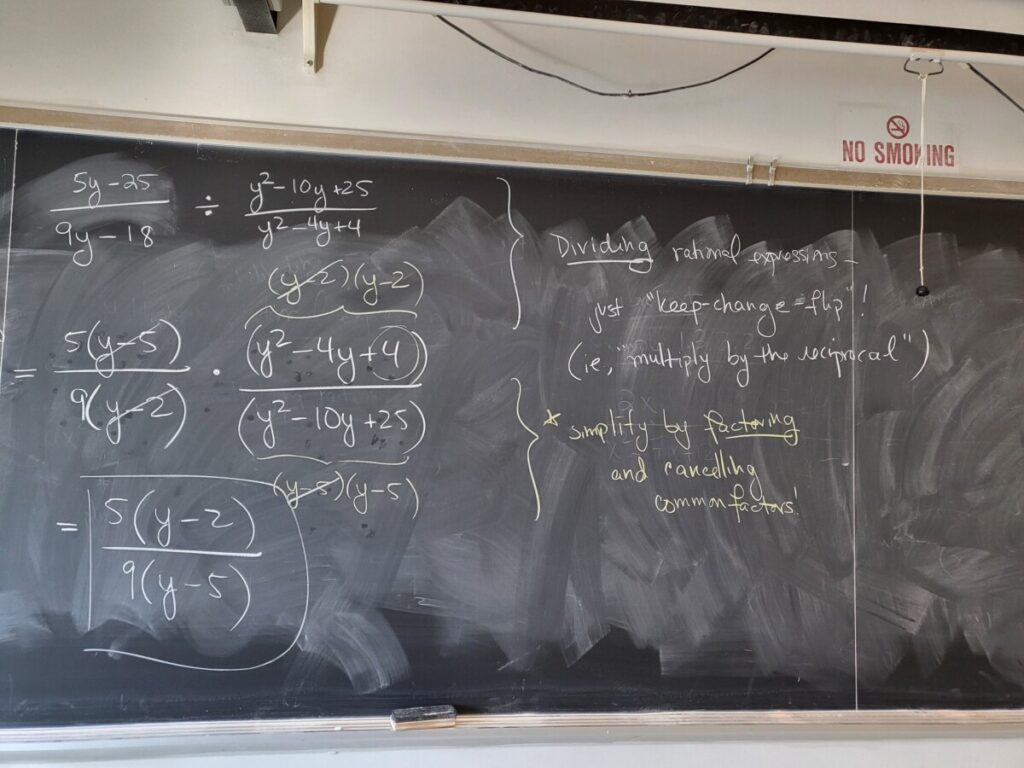
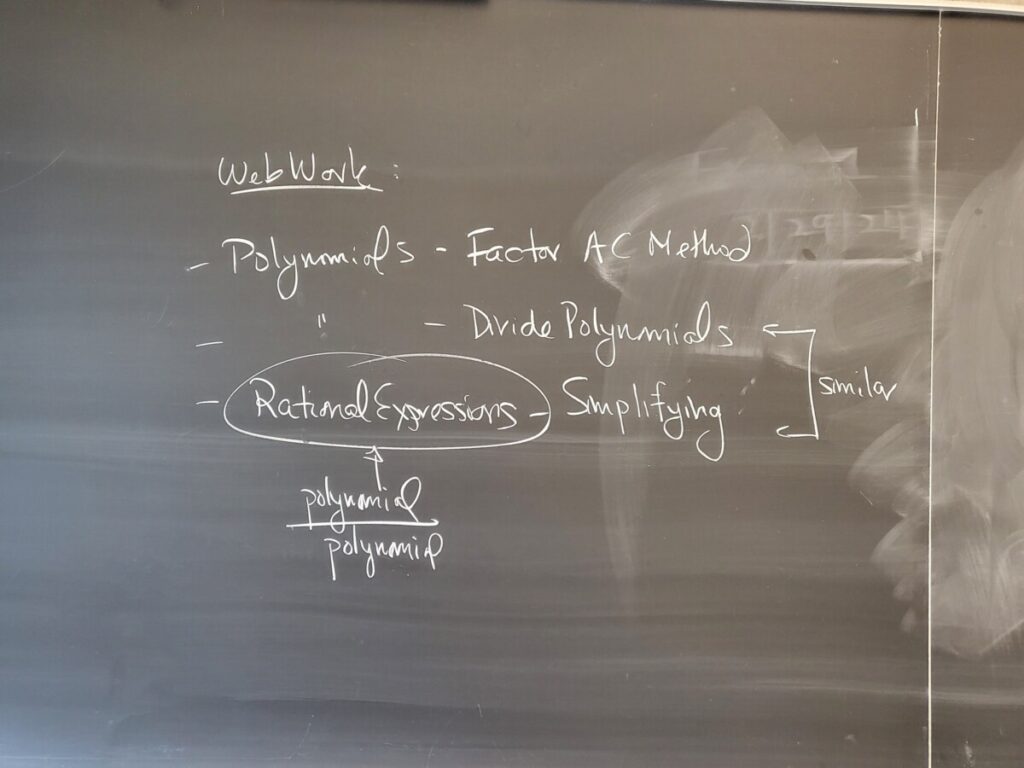

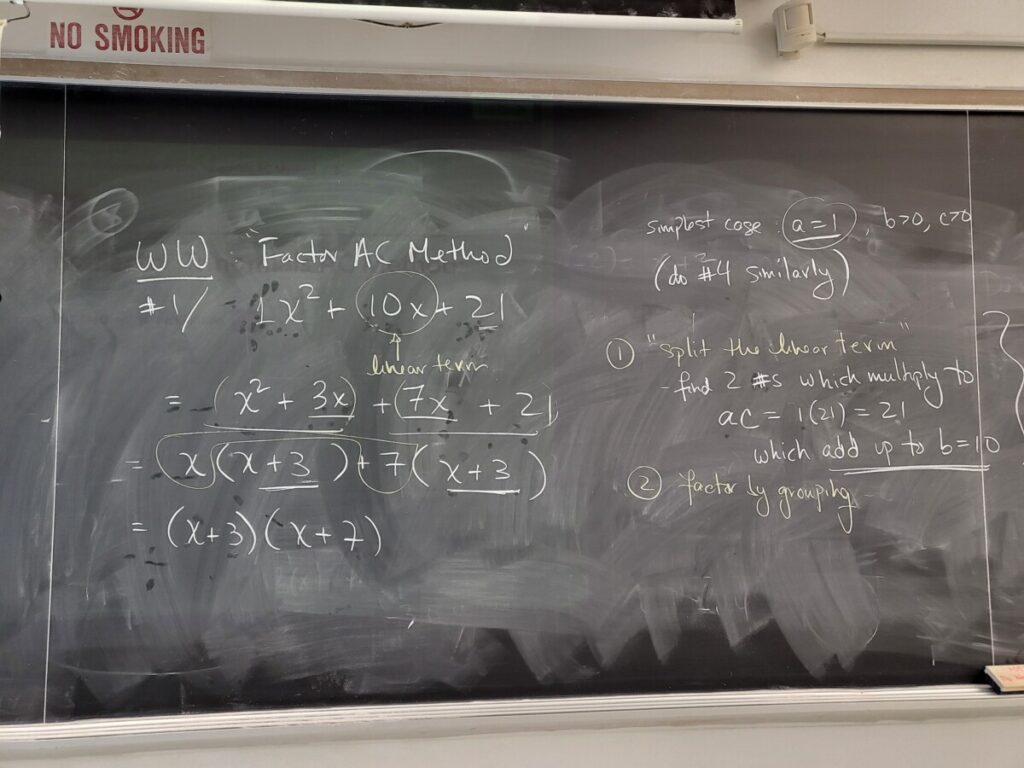
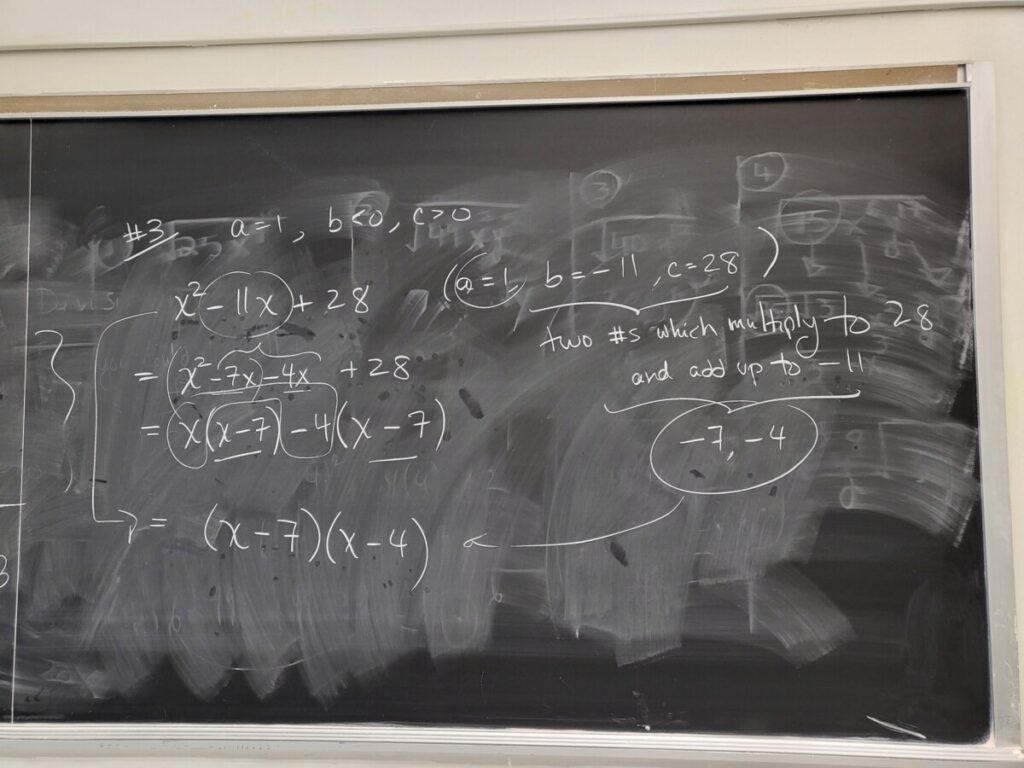
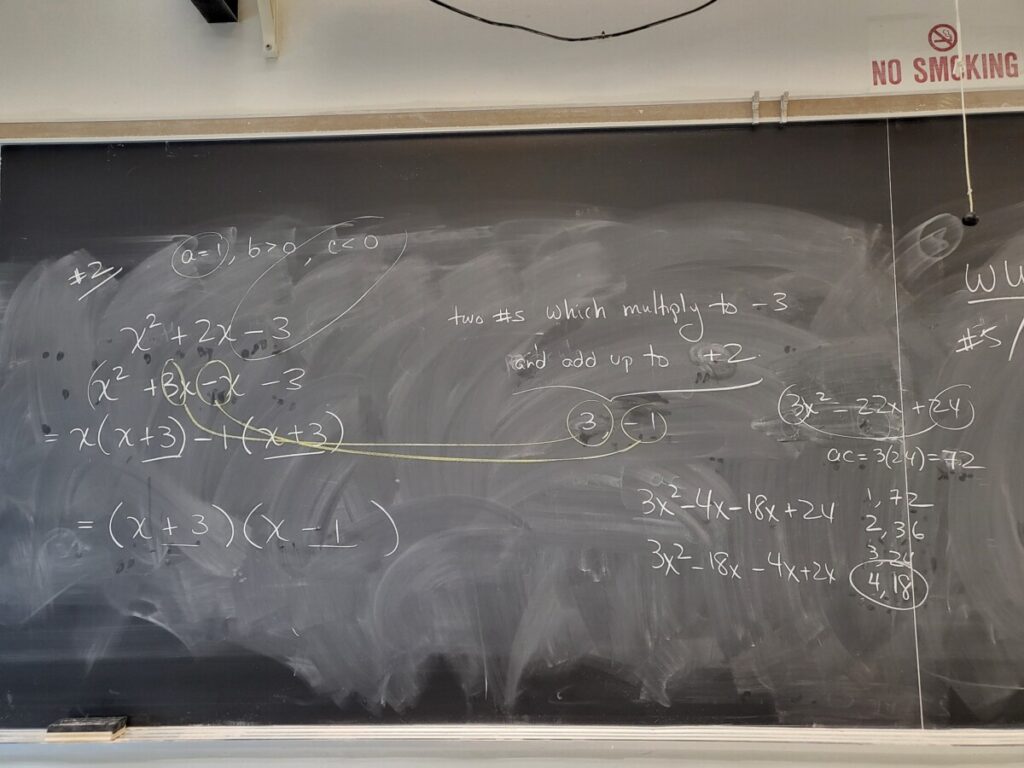

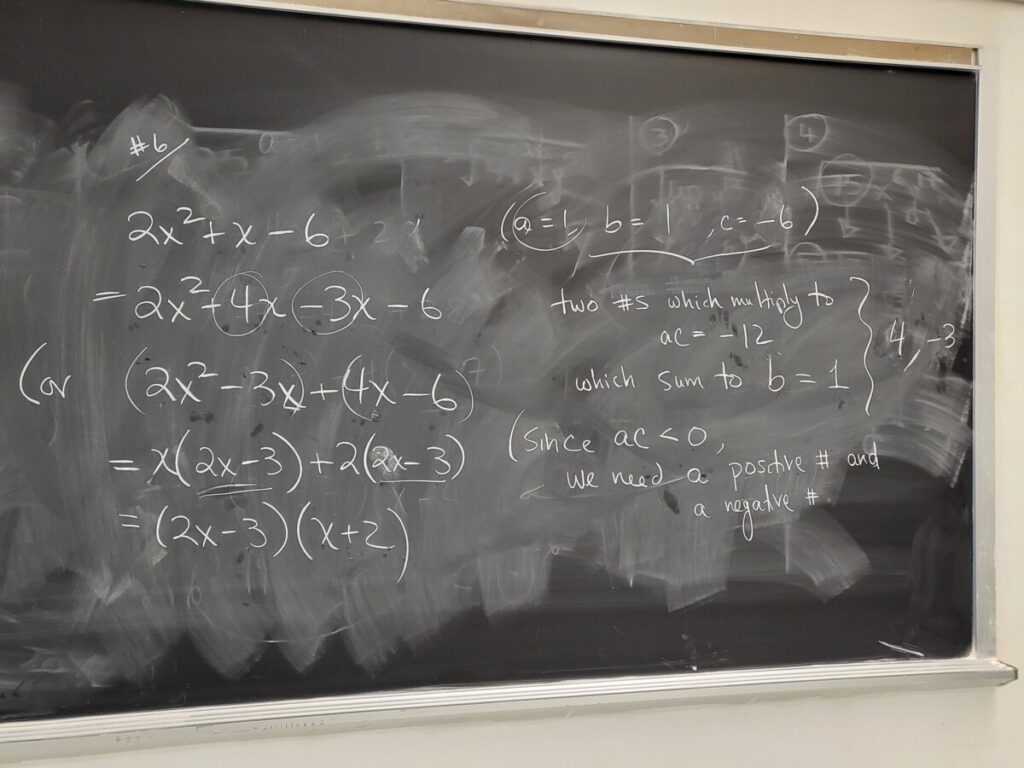
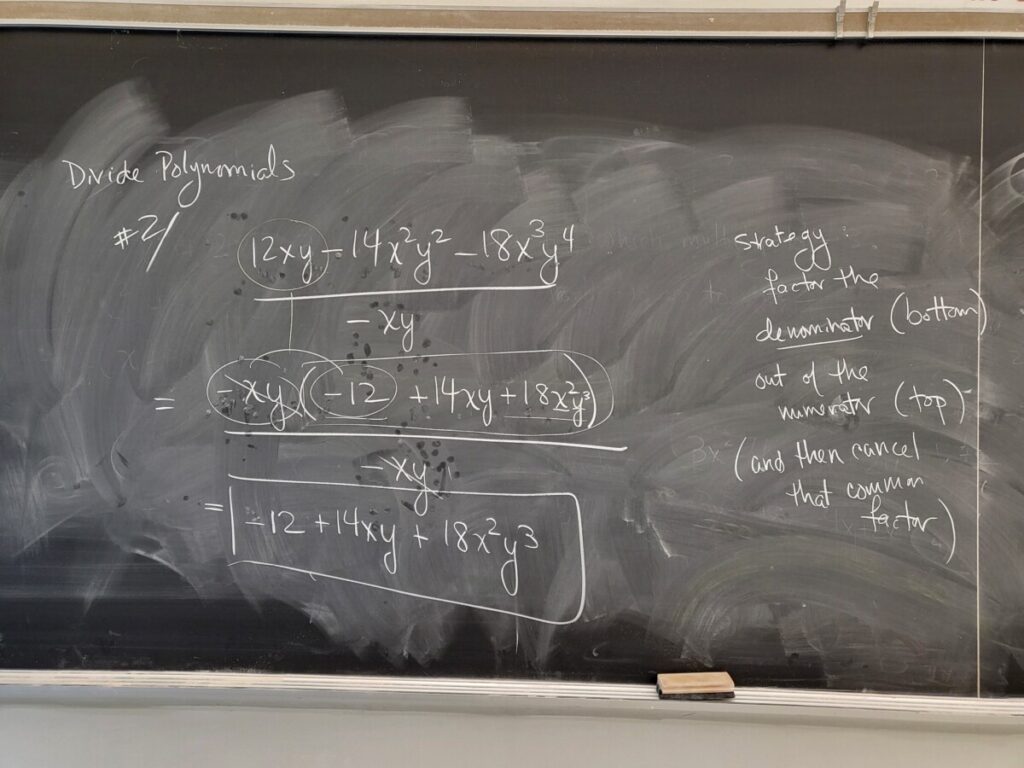
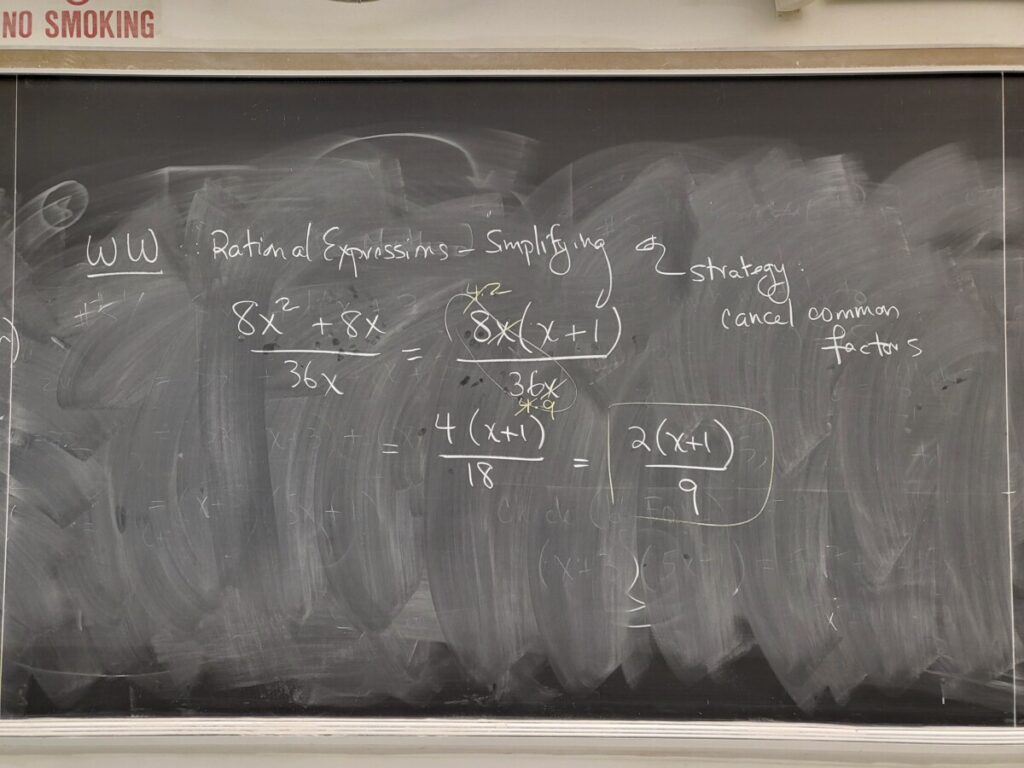
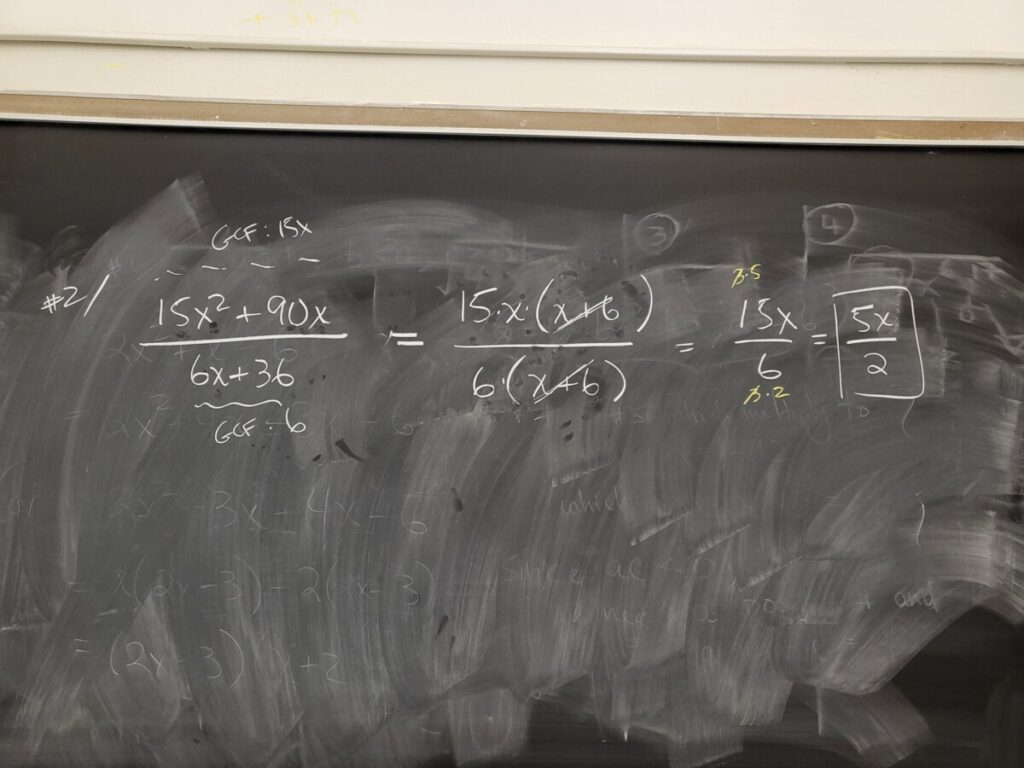




Recent Comments